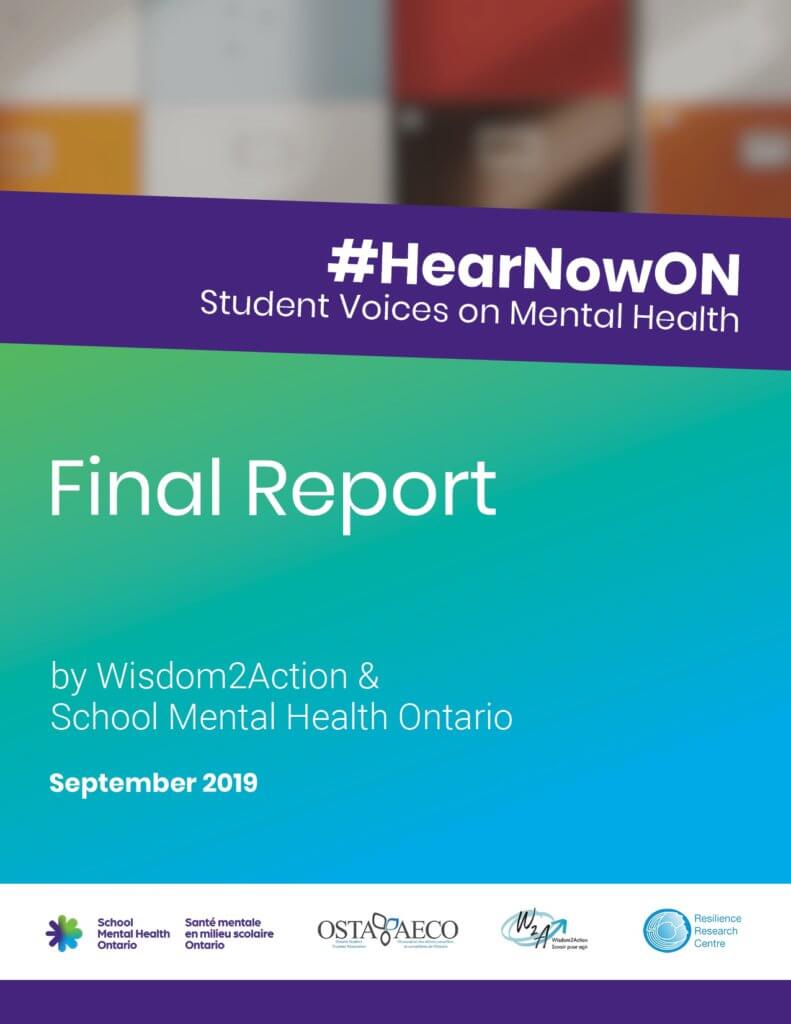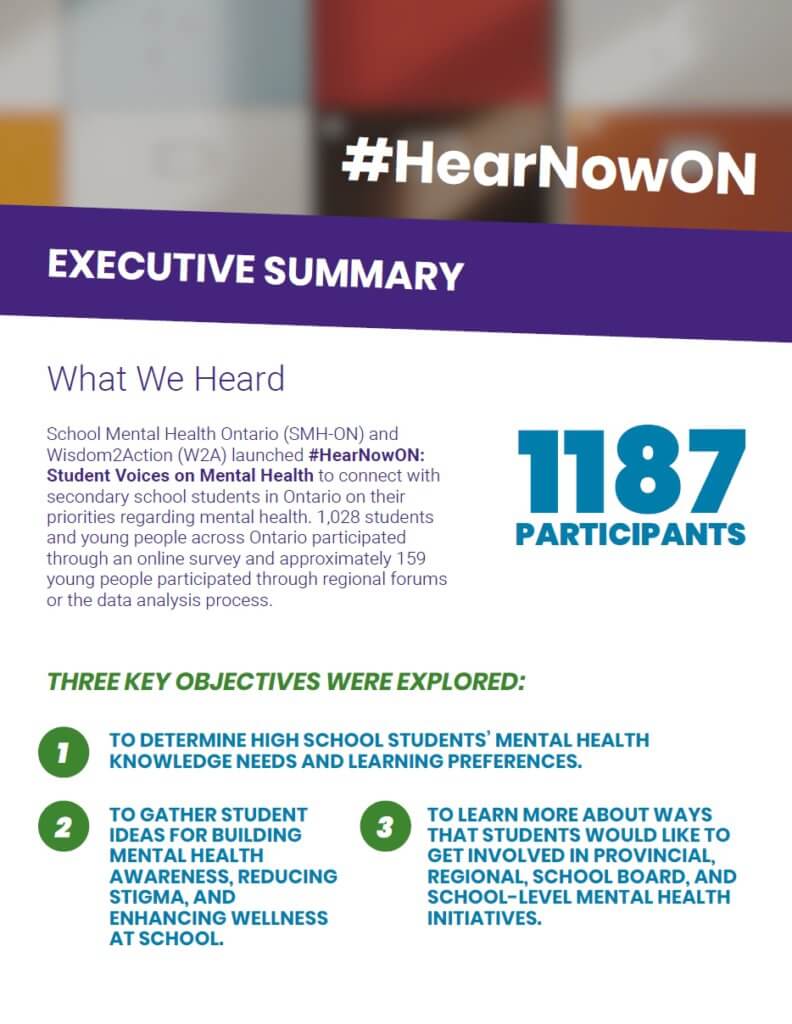#HearNowON 2019: Student Voices on Mental Health – Final Report
School Mental Health Ontario, in collaboration with Wisdom2Action launched the #HearNowON initiative to gather student voice across the province regarding their mental health knowledge needs, ideas for mental health promotion, and to hear about how students would like to be involved in mental health initiatives. Through a provincial survey, regional forums and youth consultations, over 1000 young people took part in the initiative. The results are presented in the report and identify key priorities for school mental health from Ontario secondary school students.
#HearNowON: Student Voices on Mental Health
Ontario students have a lot to say about mental health #HearNowON
RT 2.41
Narrator
Good mental health is something we all want.
For ourselves, our friends, our families, and others in our schools and communities.
Schools are a great place for helping young people to learn skills for keeping good mental health.
But how this is done really matters.
Students have a lot to say about what and how they want to learn and how they can get involved in efforts to improve student mental health and wellness at school.
On Screen Logo Opening credit
School Mental Health Ontario, in partnership with Wisdom2Action, launched #HearNowOntario.
On Screen #HearNowoN Student Voices on Mental Health
Student voices on mental health to engage students in Ontario.
We need to hear their perspectives, priorities, and recommendations for improving student mental health across the province.
On Screen Build 3
Determine Needs and Preference’s
Gather Ideas to build, reduce & enhance
Learn more about how students want to get involved
We had three key objectives:
One, to determine students’ mental health knowledge needs and learning preferences.
Two, to gather student ideas for building mental health awareness, reducing stigma and enhancing wellness at school.
And three, to learn more about ways that students would like to get involved in school mental health.
Through an online survey and a series of regional forums, we reached over 1000 students.
This is what we heard:
On Screen Build
Learn more about the school day
Better informed educators
Better access to support
Prioritize inclusion and belonging
Engaged in promotion and stigma production
Students want to learn more about mental health as part of the regular school day.
Students want their teachers to learn more about mental health so that educators can be a strong resource in this area.
Students want better and clear access to supports and services through school.
Students want us to honor diversity and prioritize inclusion and belonging.
Students want to be better informed about and engaged in mental health promotion and stigma reduction initiatives.
Students want to learn more about mental health at school.
On Screen
97% Want to learn more
Early warning signs
Ways to cope with thoughts and emotions
How and where to ask for help
How to help friends
Primarily, they want to learn more about early warning signs of mental health problems, ways to cope with their thoughts and emotions, how and where to ask for help, and how to help their friends.
On Screen Build
In Class 78.5%
Online 38.9%
Small Groups 32.3%
Not only do students want to learn about mental health in their classrooms, but they also want to learn through online opportunities and small group discussions outside of the classroom.
When it comes to the prevention work that School Mental Health Ontario undertakes,
On Screen Build
Informed educators 58.6 %
Access to services 43.2%
Meaningful youth engagement 39.9%
students said their top three priorities are: better-informed educators, improved access to services and supports, and more opportunities for meaningful student engagement.
On Screen Build
Diversity
Inclusiveness
Mental health discrimination
They want us to work harder to support diversity, inclusiveness, and to better our understanding of how mental health and discrimination are connected.
On Screen Build
Want to be involved 83.7%
Aren’t involved 82.2%
Students definitely want to be involved in school mental health.
But most of them aren’t right now, so we need to be better at providing them with opportunities to be mental health leaders in our schools and beyond.
These recommendations and insight will inform our work looking forward.
As young people mental health leaders and partners across Ontario, we want you to work with us to uplift student voices improve school mental health and put this into action.
We have a lot of work to do.
Let’s get to it!


